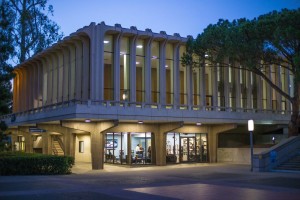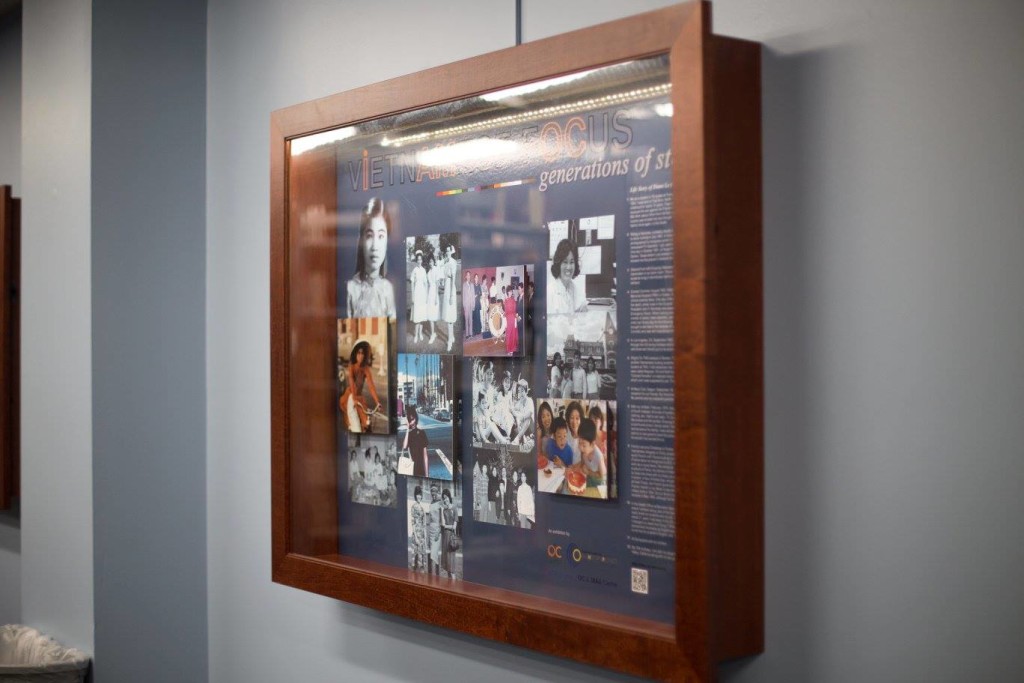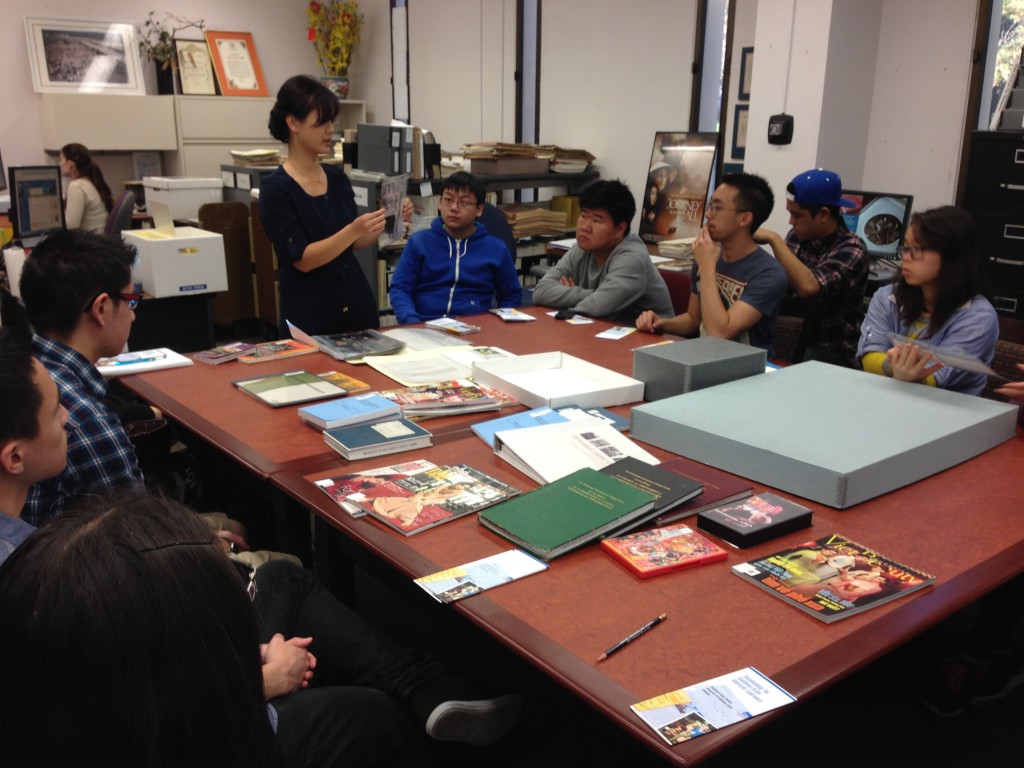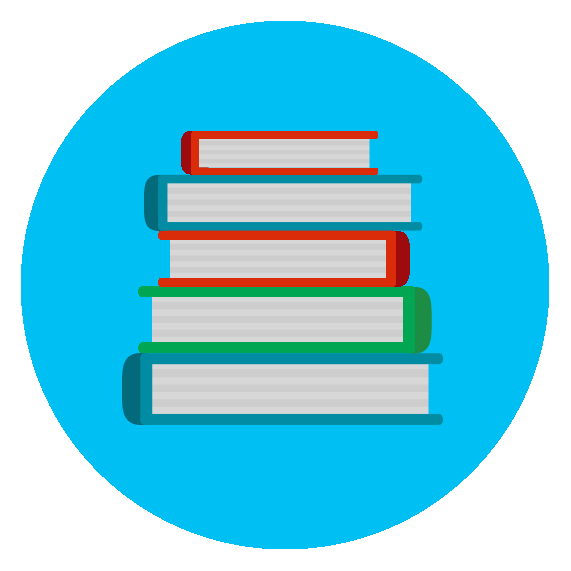by Manlia Xiong
On March 31, 2015, I had the chance to conduct a phone interview with Thuy Vo Dang, Archivist for the Orange County and Southeast Asian Archive (OC & SEAA) Center; a part of the University of California, Irvine (UCI) Libraries. With the opening of the new OC & SEAA Center on May 13, 2015, the center will provide both physical and virtual spaces for intellectual discovery and innovative research for UCI faculty, students, and the community at large. To learn how you can support the OC & SEAA Center, please visit http://ocseaa.lib.uci.edu/support.html.
Manlia Xiong (MX): Hi, Thuy. Thank you for sharing some of your time with me this afternoon. May you, please introduce yourself and briefly describe your role with the OC & SEAA collection?
Thuy Vo Dang (TVD): Thank you for having me. My title is Archivist for the Southeast Asian Archive (SEAA) and Regional History in University of California, Irvine (UCI) Libraries. My primary role involves collection development in the SEAA and OC regional history collections. I set priorities for organizations’ and individuals’ records we want to collect from. From the SEAA side, my role overlaps with bibliographer responsibilities of curating a cohesive collection on the populations from Cambodia, Laos, and Vietnam. They include a wide range of disciplines and multiple formats from audiovisual materials, to dissertations, theses, serials, and monographs. Also, I cultivate donor relationships in the community by being a liaison to community organizations and individuals. For example, we had received some records from the Khmer Girls in Action of Long Beach. These are some of the community outreach I do.
With the opening of the OC & SEAA Center, my main responsibility is the management of the space and building out new programs to introduce our collections to users. We have a really great space for instruction, so I’m trying to build that up more going forward. Then, we also have an oral history recording studio. One of my future projects is to build oral history support services. Not only do we collect and preserve oral histories, but we want to promote and empower partons to do their own documentation and record their histories here. We provide the reference materials, best practices, guides, manuals, examples of documentation forms, equipment, and documents that they can use to do the oral histories themselves. We have the equipment here, and they can come use or check them out. This sums up what I’m currently doing in my role in the UCI Libraries.

Credit: Allan Helmick
MX: Wow! Your role and responsibilities is another great example of the many hats a Librarian wears. This comes to show how we never do the same thing day in and day out and are constantly challenged in new ways.
TVD: Yes, we are.
MX: Now, could you tell me a little bit on how the SEAA collection got started? How was it built? Who are the particular people who played a role in the development or change of the collection? What role or mission does the collection address?
TVD: The SEAA is almost 30 years old. The SEAA was founded in 1987. I’d say this is a really great example of a community based archive. The catalyst for the formation of the SEAA did not come from the UCI Libraries, or as a response to the curriculum or to a faculty member’s research. Instead, the motivation came from the SEA community. As the SEA community developed in and around the county, the SEA community approached the University to document the history. Essentially it was the Vietnamese community lead by Professor Pham Cao Duong and Vu-Dinh Minh who had approached the University concerning the need to document the growing number of SEA in OC, and at that time there were no departments or units interested. However, UCI Libraries did have a research librarian who was in charge of the OC subject area. Her name is Anne Frank. She was willing to start building that relationship and collection.
As there was little funding for the new collection, initial materials were collected by donation. In 1993, relying on the community’s support the SEAA Advisory Board was formed by several key individuals including one person who is still very active named Prany Sananikone (he is currently our SEA ambassador), Professor Pham Cao Duong, Dr. Bui MInh Duc, and librarian Angela Yang. All these individuals really contributed to the phase of outreaching and building our collection via gift monographs. So, they solicited materials from the community, organizations, and individuals to send in or donate their records for the archive. From there, the collection organically grew
As the collection grew, it expanded to include the experiences of SEA refugees and immigrants all over the United States. However, the special focus on OC and California remains. It has become the mission of the SEAA to preserve and document the social, cultural, religious, political, and economic life of SEA Americans, beginning with the exodus from Southeast Asia through the process of resettlement, and to transformations in the present and future.
MX: It’s amazing to hear how many people were passionately involved in the construction and development of the collection. Moreover, to hear how the collection had become an asset to the OC & SEA community there.
Additionally, may you please describe the physical facilities that house the OC & SEAA collection? Overall, what makes OC & SEAA collection significant or unique compare to other collection?
TVD: At first, Anne kept all the items donated and collected in her office. As the collection grew, it went from a few drawers in a file cabinet, to the quarters in the basement of the UCI Libraries where the materials were housed and used with ease. It was, in the late 1990s, that the collection moved into its own reading room. The reading room was about a 600 square foot reading room located on the third floor of the Langson Library, which was once called the Main Library. In that space, the collection had a breathing room to grow and soon it outgrew that space.
In 2007, Anne retired and that was the same time of the budget crisis for the University of California. So, her position was not filled and another librarian was given the SEAA as an one more additional area of responsibility to oversee. The librarian was Christina Woo. Woo did a great job in maintaining the bibliographic responsibilities of the collection and also did some outreach. She also developed a relationship with the special collections department and a road show to take out to the community. These were some of the things to help stabilize the collection within those years.
In 2012, this position, the Archivist for the SEAA and Regional History was developed and I was appointed in 2013. We started strategizing on how we could grow both the collection and space, so that our users can start here as the beginning point for them to explore this important history. With strong support from our University Librarian, Lorelei Tanji, within a nine month period, we were able to build out the new OC & SEAA Center, which is a 2,800 square-feet space located across from Langson Library in the Libraries Gateway Study Center.
I believe what makes the collection unique is we are part of Special Collections and Archives; in a sense we are a library within a library. However, with our archival collections described and made accessible through the Online Archive of California (OAC) and with functions such as circulating books, we are able to provide reference. When we are all fully operational in May, we will have more resources that will be very unique to our collection, in particular through our commitment to expanding community engagement.

Credit: Allen Helmick
MX: Can you tell me how is the OC & SEAA collection organized? What various subcollections, formats, and unique items are included in the collection?
TVD: The Orange County and Southeast Asian Archive collections are either organized by creators, donors, organizations, and in chronological order of materials that have been accessioned and processed into the collections. The collections are not organized by subgroups or ethics groups.
One thing I want to mention is a strong partnership we have with the Vietnamese American Oral History Project (VAOHP), which began in 2011 and came out of the Department of Asian American Studies of UCI. The VAOHP objective is to capture the oral histories of first generation Vietnamese Americans who have memories of life in Vietnam, the Vietnam War, and the displacement and resettlement of refugees from Vietnam. The project plays an instrumental role in documenting their histories and legacies in order to preserve their stories for future generations. This is a born-digital oral history project. It began as an audio recording project, and now the next phase is incorporating video Interviews. This digital repository has been a really great model of how a library partnership early on can help facilitate quick access to our collection. The turnaround time for many of the oral history is between two to six months, which means that the interview is fully recorded, transcribed, translated, and made available via UCISpace. UCISpace @ the Libraries is part of a suite of digital scholarship services offered by the UCI Libraries and is a service for the UCI community to publish, manage, and preserve diverse kinds of research output. UCISpace is our depository where we archive and make our oral history accessible to the community. This is an example of a subcollection within the UCI libraries that I believe really shows a great model of University and community partnership, as well as inter-campus collaboration.
MX: May you share with me what programs are available to researchers, visitors, and community education?
TVD: In addition to the VAOHP as I had mentioned, the OC & SEAA collection has a strong collaboration with faculty on our campus. I want to mention one of our research faculty, Linda Trinh Vo, in particular. Linda is an Associate Professor of Asian American Studies here at UCI. She’s been with us for about 15 years and she has really been a great ally to the Southeast Asian Archive by embedding the collection into her curriculum, so her students may use the materials in their coursework. Drawing upon her field of expertise, she is also instrumental in expanding the collection through the advocacy work she performs in the SEA community. Moreover, she is also the Lead Faculty Advisor for “The Southeast Asian Archive Access Project,” that developed Documenting the Southeast Asian American Experience (SEAAdoc).
The SEAAdoc project is an educational resource of the SEAA at the UCI Libraries. The project brings together the core materials for elementary, secondary, and community college students who want to learn more about the immigrants and refugees from Cambodia, Laos, and Vietnam.
In addition to the programs that are available through the OC & SEAA Center, we also have the SEAA Anne Frank Visiting Researcher Award. The purpose of the award is for faculty, students and independent researchers like filmmakers and writers who live outside of OC and are not affiliated with UCI to use the research collections in the SEAA.

Credit: Thuy Vo Dang
MX: These are some wonderful programs that you had described. I hope, as we publish this article, it will help bring some prospect visitors, donors, and researchers to the OC & SEAA and Regional History Center.
TVD: Most definitely!
MX: Lastly, if someone is interested in visiting the collection, where is the center located, what are the hours and days of operation, and whom should they contact if they have additional questions about the collection and center?
TVD: Sure! The OC & SEAA Center is on the first floor of the Libraries Gateway Study Center, next door to Langson Library, on the UCI campus. We are open Monday through Friday, from 1:00 p.m. – 5:00 p.m., and by appointment. My email is tvodang@uci.edu and my office number is (949) 824-1878. An alternative contact here is Jackson Bui, who is our Technical and Access Services Assistant. His email is jacksonb@uci.edu and his office number is (949) 824-5269.
Editing assistance provided by Alyssa Jocson Porter.

